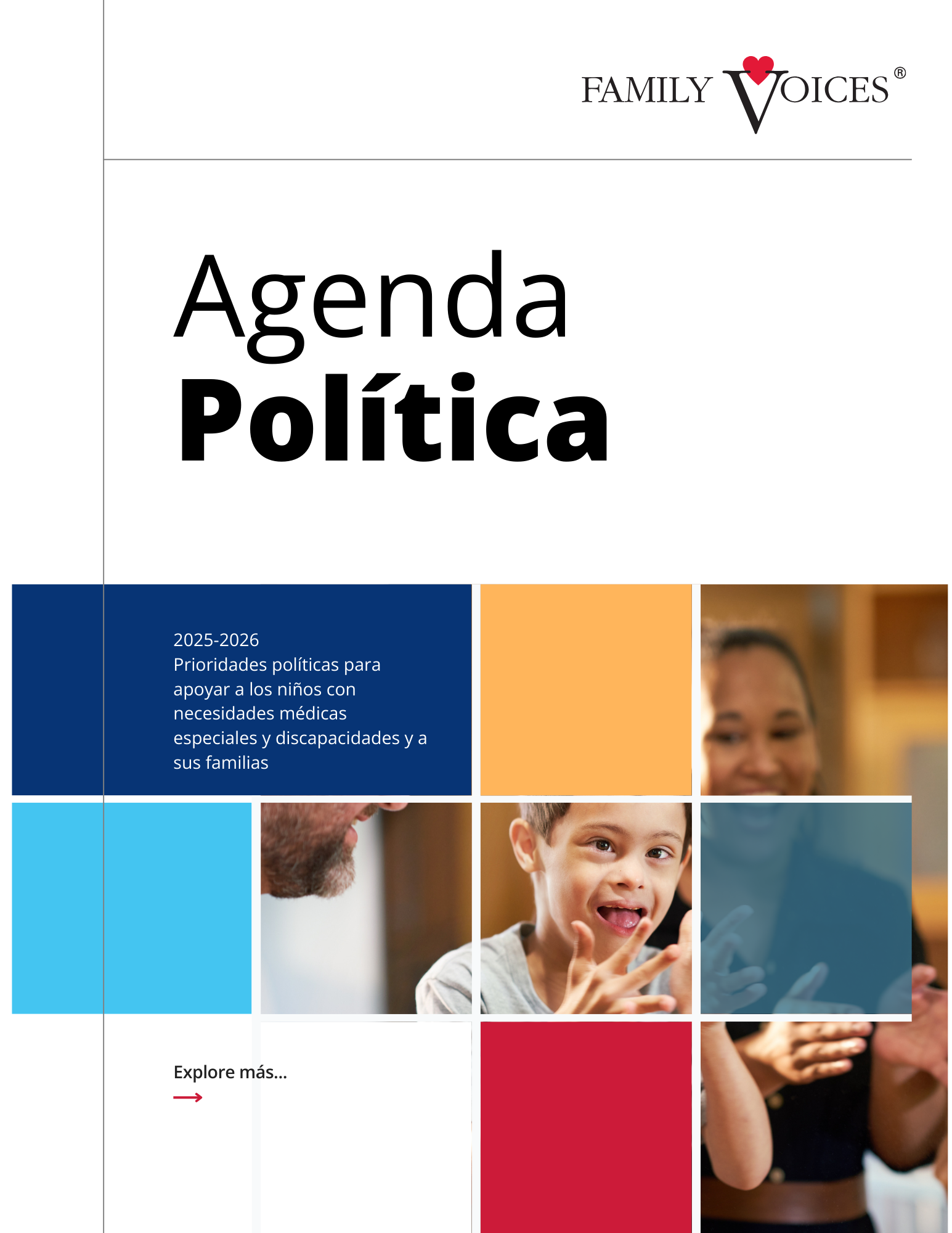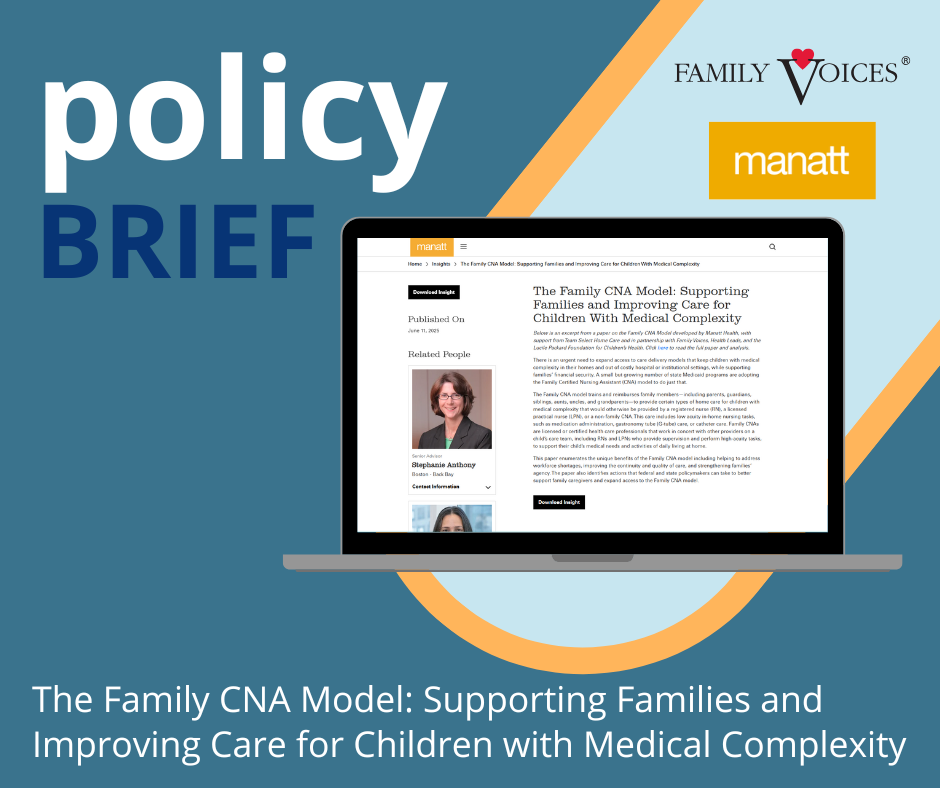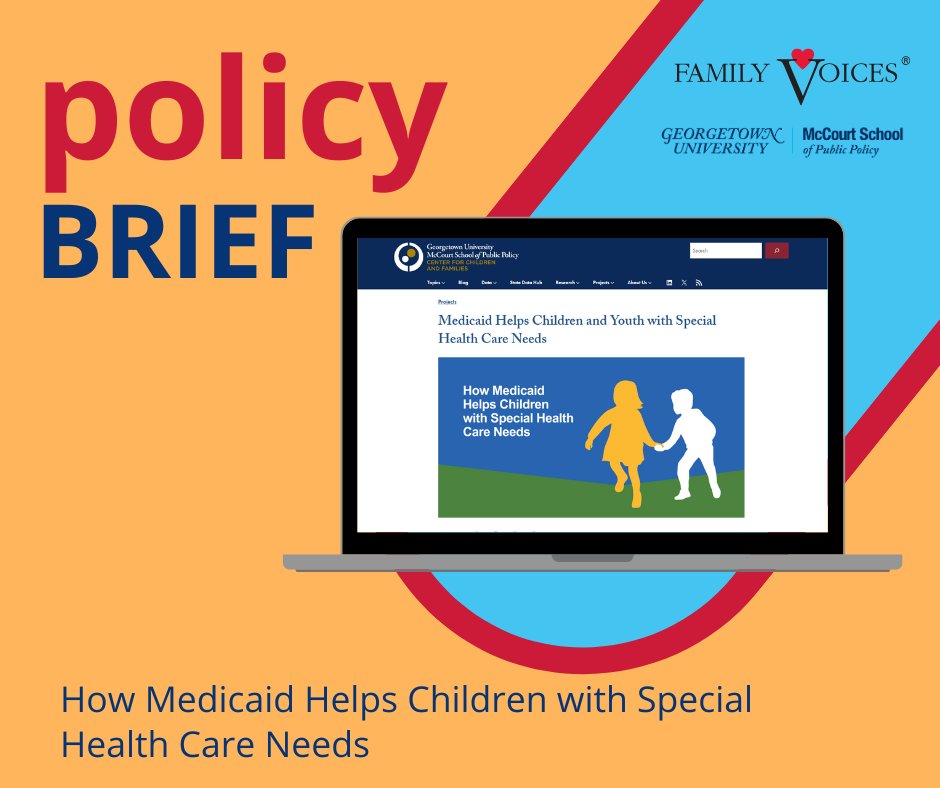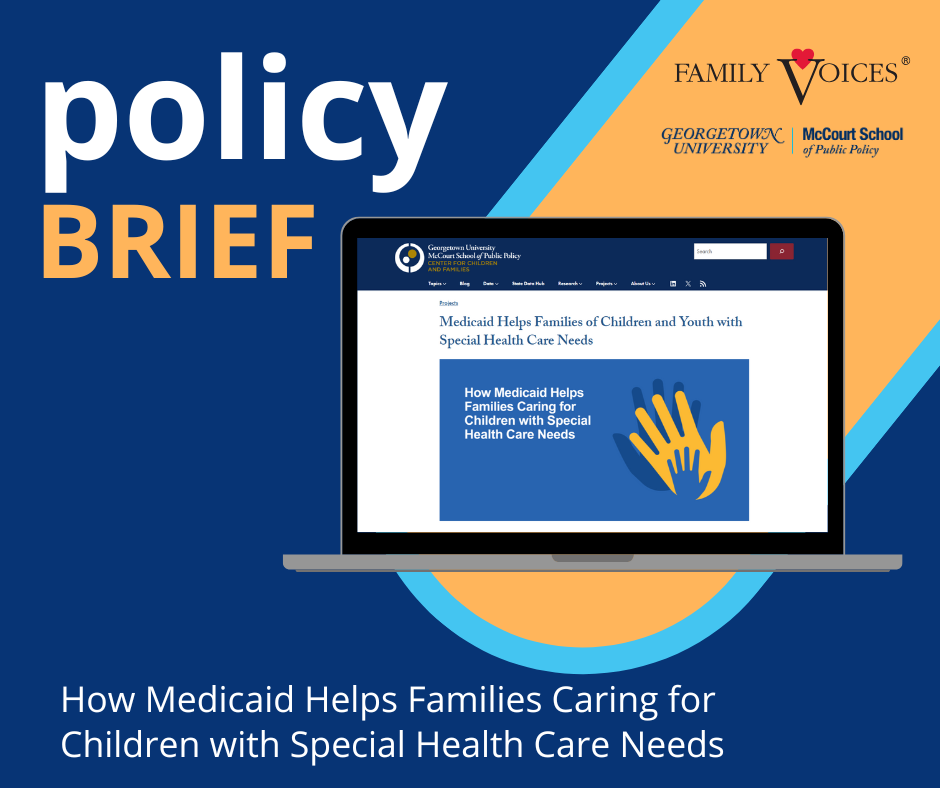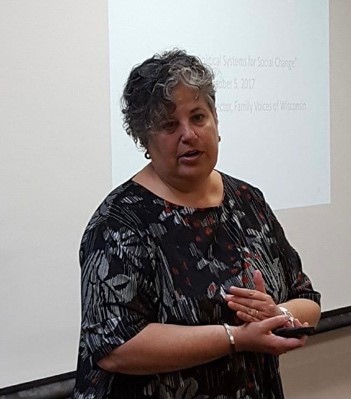
Public Policy
Policy Priorities to Support Children with Special Health Care Needs and Disabilities and Their Families
Our Strategic Policy Priorities
Children and youth with special health care needs and disabilities, and their families, face systemic barriers and biases that impede their ability to experience their best possible lives. Systems of care do not respond to their needs holistically or facilitate access to supports that enhance their quality of life.
To make the most impact, we focus our policy actions across all levels of government – federal, state, and local. We work with our family and organizational partners to lean on the various levers of policy change through education and advocacy.
Our current policy agenda includes:
- Expand access to peer-to-peer support for families of children and youth with special health care needs
- Support and expand Medicaid coverage for children and youth with special health care needs and their families and caregivers
- Improve the transition to adult health care for youth and young adults with disabilities and their caregivers and families
- Eliminate language access barriers
Family Voices collaborates with national child health and disability organizations, such as the Consortium for Citizens with Disabilities, The Arc, Autism Speaks, the American Academy of Pediatrics, and other groups.
Recent Policy-Related News
Washington Update, July 19, 2019
The big news this week: The House Committee on Energy & Commerce favorably reported out legislation to extend funding for Family-to-Family Health Information Centers for four more years (through 2023) at the current funding level of $6 million per year. The...
Washington Update, July 11, 2019
One big health care news story this week is that a federal appeals court heard oral arguments in Texas v. U.S., the case challenging the constitutionality of the Affordable Care Act. Another significant event: on July 11, a House subcommittee is expected to take up...
Washington Update, June 21, 2019
The House has passed an appropriations bill that would provide a $34 million increase in funding for the Title V Maternal and Child Health Block Grant in FY 2020. Key Senators have introduced a bill to address health care costs. The Kaiser Family Foundation has come...
Washington Update, June 13, 2019
Congress has been busy with hearings on a variety of health issues, including a June 4 hearing on the Family-to-Family Reauthorization Act and other health bills. South Carolina joins other states in proposing to modify its Medicaid program to establish “community...
Washington Update Special Edition: June 4 House Hearing on F2Fs
As reported in the May 29 Update, bipartisan bills have been introduced in both the House and Senate to extend F2F funding for five more years at the current level of $6 million per year. Without such legislation, funding for the program will expire at the end of the...
Legislation
The legislation tracked below is for informational purposes only. It is not meant to be an endorsement for or against the legislation. Action updates may occur daily, if actions are taken by Congress. Newly introduced legislation will be added weekly.
The legislative tracker is sorted by latest action. To navigate this page, you can scroll through just as you would a normal webpage. You can also click Ctrl+F on your keyboard and type in the search box.
For additional information and to read the full text (if available), click the highlighted bill number. You can also navigate to Congress.gov and search using key terms or phrases, or the bill numbers listed below.


